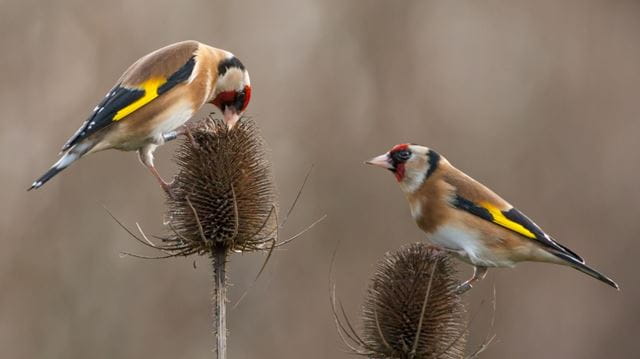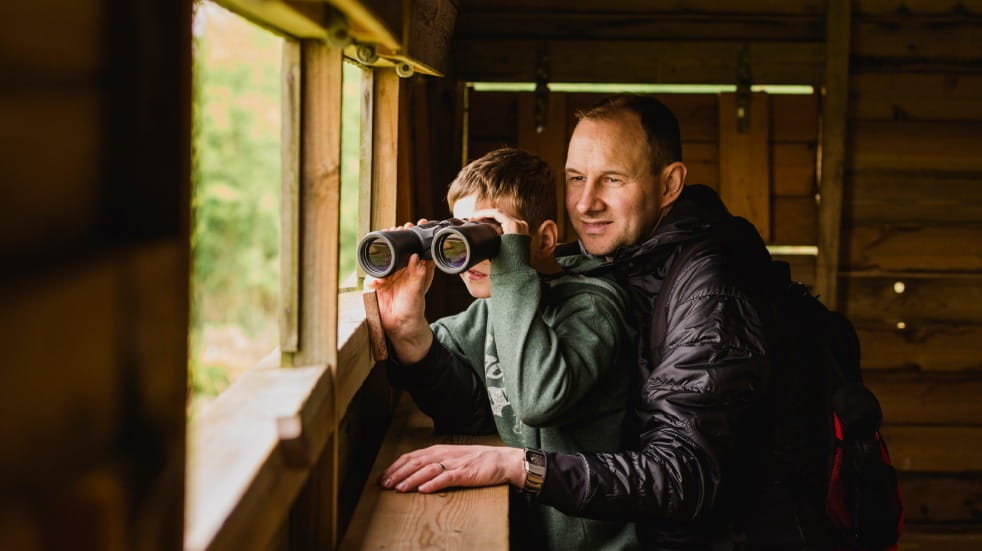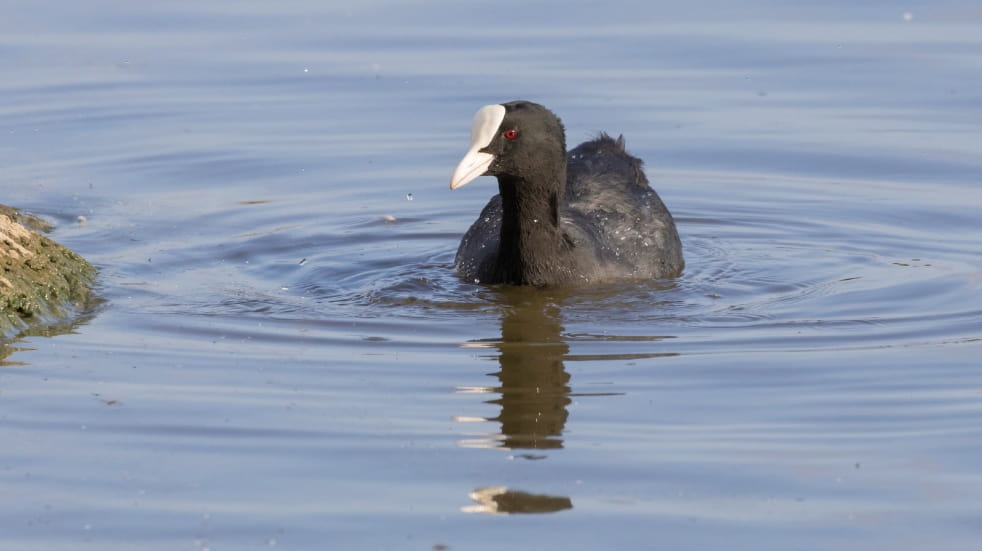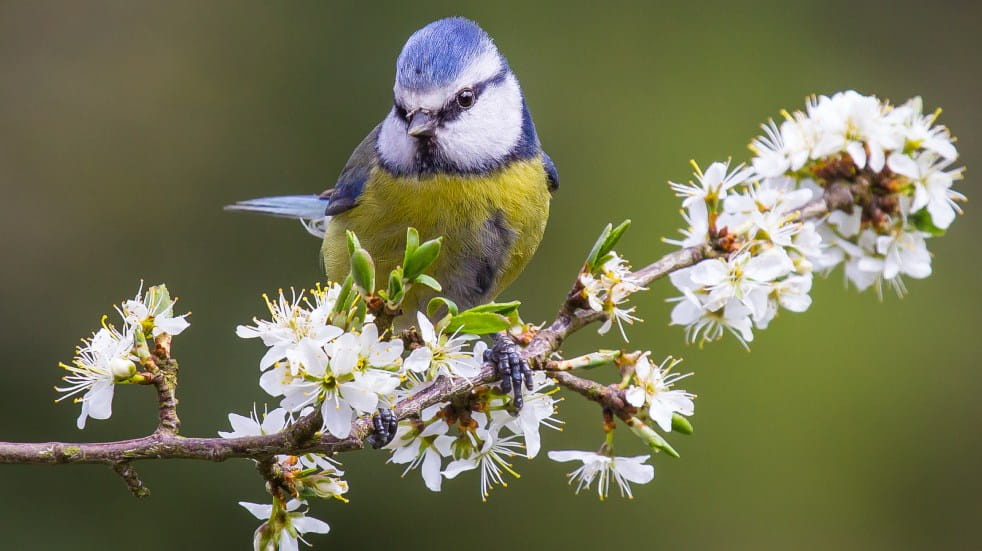
Learn how to get started with bird watching, and discover how you can experience the uplifting effects of this rewarding hobby with Boundless membership
Birdwatching doesn’t have to be complicated. It can be immensely rewarding, even if you only ever remain a casual but mindful observer. But if you get the birdwatching bug, you could find yourself getting swept along and developing a dedicated, hardcore twitching habit, says BBC Springwatch presenter Gillian Burke.
The sun is almost directly overhead. Wings splayed and forked tail twitching, a black kite circles and banks as it surveys the scene. Down below is a group of children, sharing the thin shade of a jacaranda tree and dressed in sky-blue school uniforms with would-be white collars and socks.
One of them is me – six years old, growing up in Kenya and far too absorbed in unwrapping my lunch to take any notice of the sharp-edged shadow of a raptor hovering above and watching my every move. A moment later, I’m slapped in the face by a giant pair of wings, my fingers are bleeding and my sandwich gone.
That was my first of many encounters of the feathered kind and it’s fair to say it wasn’t the last – hornbills, ravens, gulls, skuas, roosters and even a robin have all had a go over the years – but I’ve never let it put me off, mesmerised by the incredible form and colour of a variety of bird species.
Jump to:
- How to start birdwatching
- Where to go birdwatching in the UK
- Unlimited access to WWT centres
- Birdwatching at Kew Gardens
- Birdwatching at National Trust for Scotland places
How to start birdwatching
With more than 600 recorded bird species in the UK, a whole world awaits, and it can start in your local park, your back garden, or even at your kitchen window. The habits of many of our common bird species closely align with our own, which makes it an easy pastime. Most are diurnal, which means they are active during daylight hours. Many of them nest in areas close to – sometimes even in – our homes, and look for food close by, too. But knowing where to start can be overwhelming.

Sit and wait for birds to come to you, says Gillian/Credit: Getty Images
There are so many species and so much variability: winter migrants, summer migrants, passage migrants, summer plumage, winter plumage, juvenile plumage, breeding plumage... it’s enough to make you lurch for a cup of tea (or something stronger). The single best piece of advice I was given was not to look, but to listen. The trick is to start with the most common birdsongs and calls first – and a good place to start is with the robin. For most of us, this bird is like a familiar old friend.
Even in the deep midwinter, Britain’s favourite bird can be seen and heard singing its little heart out, which makes robins a great bird to learn while most others have fallen silent or simply left for winter. In mid-spring there are far more birds about, and the tuneful song thrush, with its distinctive habit of repeating different phrases two or three times before moving on to a new theme, is an easy one to add to your growing lexicon of birdsong.
More and more birds join the line-up as spring ramps up and the soundscape becomes layered with new calls and songs, but with a little mindfulness and some practice (and a good audio field guide up your sleeve), you’ll be compiling your very own ‘Who’s Who’ of the bird world – and that’s all before adding binoculars to the mix. So how do you get a closer look at these captivating creatures? Well, you let the birds come to you…
Where to go birdwatching in the UK
It’s also a great way to observe the more common garden birds, from sparrows and tits to finches and even woodpeckers if there’s a suitable woodland nearby. Early morning (the earlier the better) and mid-afternoon tend to be the best times to observe garden birds, although different species display differing habits, so it’s hard to generalise. Nature reserves are a fantastic way to get close-up views, as they often keep an array of feeders filled with specialist seed and strategically placed to attract familiar and the more unusual species.
Boundless partner WWT and the RSPB are good places to start. Of course, many of these reserves will also have hides and viewing platforms overlooking distinctive habitats, like salt marshes, tidal mudflats and even raptor feeding stations that attract the sort of birds that you’re incredibly unlikely to see at home.
You can often rack up between 30 or 40 different species in urban and suburban parks and gardens, which isn’t bad at all. But if you find yourself experiencing a restless urge to head out in search of the remaining 580-odd UK recorded species and tick them off your list, then you may well be graduating to the ranks of the dedicated twitchers, where hobby gives way to passionate pursuit of the UK’s most fleeting avian visitors and rarities. Take it from me, it can be a real buzz – even if the odd one does attack your picnic.
Enlist some expert help
If you do want to get serious about birdwatching, and would like some expert guidance and advice, check out these options.
Most of the UK’s nine WWT centres, bespoke guided walks take place throughout the year, including birdwatching and species identification. See what events are at WWT throughout the year. At RSPB reserves nationwide, you can join a guided walk with a group, or, for a total twitching experience, hire your own expert guide for the day.
Elsewhere, the Field Studies Council, an environmental education charity, offers a wide range of fieldwork and outdoor learning courses for all ages and skills, about birds and much else.
Enhance your birdwatching with Boundless

Spot a huge variety of birdlife a WWT nature reserves/Credit: Getty Images
Unlimited access to WWT centres
WWT nature reserves support a wide range of bird species and wildlife, including some of the UK’s rarest bird species, by providing food sources and essential habitat to nest.
To spot birds in their natural environment, head to one of the nine WWT centres across the UK, where you can spot wetland birds from accessible walkways and hides. And when you’re ready for a warm drink or bite to eat, each WWT centre has a cosy café waiting to welcome you.
Boundless membership grants you and up to five children the opportunity to make the most of unlimited entry to all nine WWT centres, plus 50% off for one additional adult guest.
Birdwatching at Kew Gardens

Catch a glimpse of garden birds at Kew/Credit: Getty Images
From delicate blue tits to elegant wading birds, the varied plant life and natural habitats found at Kew and Wakehurst Gardens make it an ideal place to see a diverse range of birds.
Depending on the time of year, you can spot birds such as woodpeckers, kingfishers, jays, grey herons and various tit species which all forage for food and nest in the trees at Kew. The gardens are also home to three varieties of owl species; tawny, barn and little owl which patrol the grounds at night hunting for prey and help control pest numbers.
Boundless members get from unlimited access to Kew Gardens, plus 50% off an additional adult and admission for up to five children.
Birdwatching at National Trust for Scotland places

St Abb's Head, Scotland is famous for seabirds/Credit: Getty Images
Scotland’s wild and remote landscapes and coastline make it a haven for wildlife with National Trust for Scotland places home to a rich variety of birds.
Thanks to conservation efforts, the charity actively protects the habitats of more than a million seabirds and nesting birds at its sites. Canna is home to more than 200,000 breeding seabirds, while the remote peninsular of Burg on the Isle of Mull is a spectacular location to spot golden eagles soaring. The dramatic coastal headland of St Abb’s Head is famous for its seabird colonies, dubbed ‘seabird city’.
During a walk at one of its spectacular nature reserves or trails, there is a wide variety of bird species to spot, including heron, kingfisher and woodpecker. There’s a good chance of seeing birds of prey hunting at many sites, with golden eagle osprey and red kites often spotted circling overhead in the wild landscape of Mar Lodge Estate in the heart of the Cairngorms.
Boundless Plus members benefit from unlimited access to all National Trust for Scotland places. Plus get unlimited access for an additional adult and up to six children per visit. You’ll also get a free car park pass.
Do more with Boundless
If you're working in or retired from the public sector or civil service, Boundless has two great membership options to choose from: Boundless and Boundless Plus. With Boundless, you get unlimited access or discounted entry to many of the UK’s top attractions, including Kew Gardens and Wakehurst and WWT centres across the UK, as well as year-round deals on restaurants, holidays, shopping and much more.
With Boundless Plus, you can enjoy additional benefits including unlimited access to Historic Royal Palaces sites, National Trust for Scotland places, access to The Ramblers' extensive walking community, and peace of mind with roadside assistance and local recovery by Britannia Rescue.




